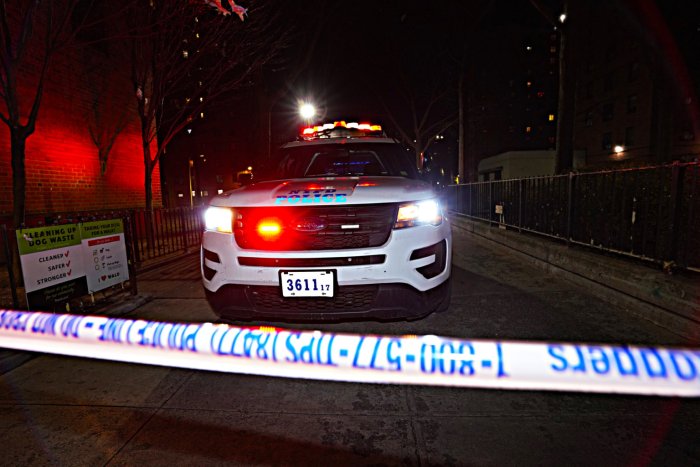Don’t Want East End Woes Here
Fearing that the local freight rail system will soon be overwhelmed with westbound trash-filled trains, Queens residents want their voices heard as Long Island leaders hammer out a long-term waste management strategy.
Community Board 5 District Manager Gary Giordano sent a letter to Gov. Andrew Cuomo last Friday, Sept. 5, sounding concerns about the potential for increased freight rail transport of garbage from points in Suffolk County to the Fresh Pond Railyard in Glendale and the CSX line in Middle Village.
Trash imports from Long Island increased in July and August after the Department of Environmental Conservation (DEC) issued an emergency permit allowing waste management companies to ship out solid waste bales to reduce a garbage backlog. This was reportedly the result of a trucking shortage in June which forced waste management companies to stockpile waste it could not ship out expeditiously.
The emergency operation, which expired on Aug. 19, successfully eliminated the garbage stockpile, according to an Aug. 23 report in Newsday. The DEC, Suffolk County leaders and waste management firms are now exploring “rail freight as a permanent operation” to handle the county’s trash, the report noted.
But expanding freight rail out of Suffolk County, Giordano indicated, would come at a heavy cost to Queens residents.
“While I realize that these neighboring counties may have accumulated waste that they need to dispose of, the communities of Glendale, Ridgewood, Middle Village and Maspeth (which we represent) are already overwhelmed with freight rail traffic,” Giordano wrote to Cuomo. He pointed out the Fresh Pond Railyard is the only switching point between the Long Island Rail Road’s (LIRR) Montauk branch-the only freight link to Long Island-and the CSX line, the sole freight link between Long Island and the rest of the country.
As previously reported, the New York and Atlantic Railway-which operates the Fresh Pond Railyard-moves shipments from the Montauk branch to the CSX line. Locomotives then haul the cars northbound on the CSX line over the Hell Gate Bridge to other points in the U.S.
“Operations at the Fresh Pond Railyard are already overwhelming community residents, with all-night coupling and movements waking people up, including children, well after midnight,” Giordano continued. “There is very limited freight rail capacity on Long Island, and since Glendale is the site of the freight rail yard-and Middle Village the point where longer and longer trains are hooked up to the CSX railroad locomotives- the residents of these communities are suffering.”
Board 5’s district manager urged Cuomo and Long Island leaders to consider other otpions, specifically barging garbage out of coastal transfer stations in Nassau and Suffolk counties.
“We want to be good neighbors, but our residents need relief, not more sleepless nights and excessive pollution from very old locomotives,” Giordano concluded in his letter to Cuomo. “Better solutions are needed, and we need your able assistance.”
Mary Parisen, co-chair of Civics United for Railroad and Environmental Solutions (CURES), told the Times Newsweekly in a phone interview Monday, Sept. 8, that the DEC and Long Island leaders need to forumlate a long-term solution to their own garbage woes without adding to burdens residents living near the Fresh Pond Railyard and nearby freight lines experience.
“We know that New York State exports waste; it’s our number one export,” Parisen said. “You can’t trade one evil for the other. We’re not against rail; we never were. But they have to understand the limitations of the state rail system.”
Barging trash out of Nassau and Suffolk counties, she said, “has to be a viable option,” as it would reduce congestion on local rail and roads while also offering an alternative way for Long Island to get rid of its trash.
“We cannot have the same burdens on the same communities on the same rail in the same railyard,” Parisen added. “Long Island should not be able to turn around and push it on the rail. They need to explore what they can do in their communities and their counties to get rid of their waste.”



































